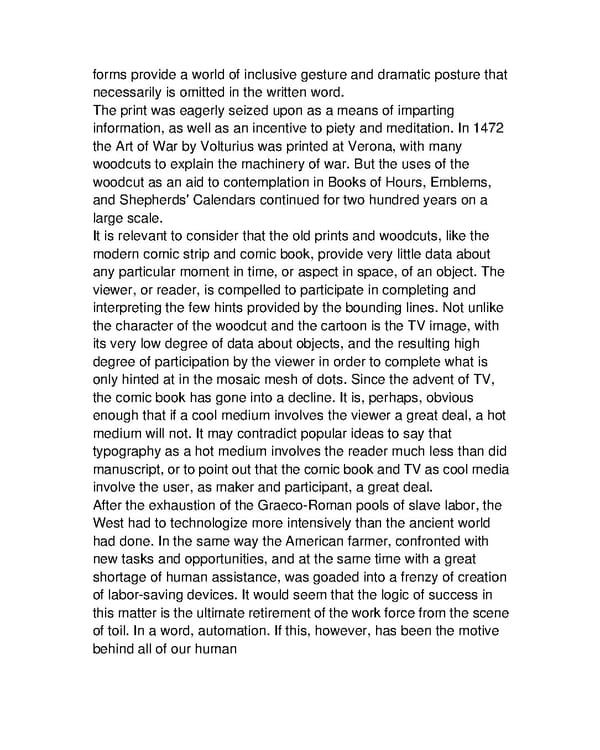forms provide a world of inclusive gesture and dramatic posture that necessarily is omitted in the written word. The print was eagerly seized upon as a means of imparting information, as well as an incentive to piety and meditation. In 1472 the Art of War by Volturius was printed at Verona, with many woodcuts to explain the machinery of war. But the uses of the woodcut as an aid to contemplation in Books of Hours, Emblems, and Shepherds' Calendars continued for two hundred years on a large scale. It is relevant to consider that the old prints and woodcuts, like the modern comic strip and comic book, provide very little data about any particular moment in time, or aspect in space, of an object. The viewer, or reader, is compelled to participate in completing and interpreting the few hints provided by the bounding lines. Not unlike the character of the woodcut and the cartoon is the TV image, with its very low degree of data about objects, and the resulting high degree of participation by the viewer in order to complete what is only hinted at in the mosaic mesh of dots. Since the advent of TV, the comic book has gone into a decline. It is, perhaps, obvious enough that if a cool medium involves the viewer a great deal, a hot medium will not. It may contradict popular ideas to say that typography as a hot medium involves the reader much less than did manuscript, or to point out that the comic book and TV as cool media involve the user, as maker and participant, a great deal. After the exhaustion of the Graeco-Roman pools of slave labor, the West had to technologize more intensively than the ancient world had done. In the same way the American farmer, confronted with new tasks and opportunities, and at the same time with a great shortage of human assistance, was goaded into a frenzy of creation of labor-saving devices. It would seem that the logic of success in this matter is the ultimate retirement of the work force from the scene of toil. In a word, automation. If this, however, has been the motive behind all of our human
 Understanding Media by Marshall McLuhan Page 178 Page 180
Understanding Media by Marshall McLuhan Page 178 Page 180